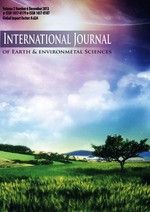BIOLOGICAL PROFILE OF LOCALLY GROWN BANANA CULTIVARS AND THE CAPABILITY OF THEIR PSEUDOSTEM SAP AS AN ALTERNATIVE ELECTROLYTE FOR WET CELL
DOI:
https://doi.org/10.58885/ijees.v08i1.009.juKeywords:
Banana, sap, electricity generation, potential energy, renewable energy, wet cell battery.Abstract
This study used the qualitative and quantitative experimental research design to establish the biological profile of the banana cultivars and the capability of their pseudostem sap as an alternative electrolyte for wet cell. Data were gathered by collecting banana sap and placing it in a 12-volt wet cell battery and observed at different time intervals. Mean, ANOVA, Duncan’s Multiple Range Test, LSD and pairwise comparison were used to determine significant differences between potential voltage and time interval. Bungulan, Lakatan, and Morado are derived from Musa Acuminata, while the Bulkan, Dippig, and Tordan are from the species of Musa Acuminata x Musa balbisiana. However, each cultivar is a member of a separate group, including the AABB, Cavendish subgroup of the AAA, AA, AAA, ABB, and AAB Group. The pH of the substrate is neutral, while the pH of newly harvested pseudostem sap turns acidic after 4 weeks of storage. The effects of the treatments, time interval, and their interactions produced a highly significant difference. The positive and negative control, and the six cultivars are statistically and significantly different from one another while Bungulan, Morado and Tordan cultivars are statistically the same. Week 1 had the highest voltage recorded and statistically the same mean voltages as in Weeks 2 and 4 with the lowest voltage seen in Week 3.The interaction of the sulfuric acid, distilled water, cultivars, and time interval yielded different voltage and are not statistically comparable. The pseudostem sap of the different banana cultivars contained in a 12-volt wet cell battery can lit the 5, 10 and 15-watts LED bulbs until the fourth week of storage.Using the pairwise comparisons, the treatments are statistically the same with one another. Hence, the banana pseudostem sap can be used as an alternative electrolyte for wet cell.
References
Banana: Description, history, cultivation, nutrition, benefits, and facts. (2023). In Encyclopedia Britannica. https://www.britannica.com/plant/banana-plant Banana flowers: Improving the understanding of banana. (n.d.).
https://www.promusa.org/Banana+flowers
Turner, D. W., & Barkus, B. (1973). Loss of mineral nutrients from banana pseudostems after harvest.
Tzen, E., & Papapetrou, M. (2012). Promotion of renewable energy sources for water production through desalination. Desalination and Water Treatment, 39(1–3), 302–307. https://doi.org/10.1080/19443994.2012.669232
Tock, J. M., Lai, C. W., Mohamed, A. R., Tan, K. H., & Bhatia, S. (2010). Banana biomass as potential renewable energy resource: A Malaysian case study. Renewable and Sustainable Energy Reviews, 14(2), 798–805. https://doi.org/10.1016/j.rser.2009.10.010
Abdullah, N., Sulaiman, F., & Taib, R. M. (2013). Characterization of banana (Musa spp.) plantation wastes as a potential renewable energy source. In Nucleation and Atmospheric Aerosols. American Institute of Physics. https://doi.org/10.1063/1.4803618
Dolojan, F. (2016)BBTV incidence in Quirino Province. Quirino State University.
http://itfnet.org/istf2016/ConcurrentPaperSlide/ISTF_2016BBTV_INCIDENCE_IN_QUIRINO_PROVINCE.pdf
. Utilization of banana pseudo-stem in production of mineral SAP drinks, flour and liquid detergent.
Barcelona, J. A., Daiwey, A. L, Delos Santos, R., Salibo, N. A. G., Ursua, J. C. (2018). Identifying the voltage of the different cultivars of banana pseudostem sap as electrolyte for electricity generation [Research paper, Quirino State University Laboratory High School].
Dela Cruz, A. Olivar G., Sanchez, R., & Ursua, J. (2011). The potential of different domesticated animal urine as electrolyte for electricity generation [Research paper, Quirino General High School].
Gomez, K. A., & Gomez, A. A. (1984). Statistical procedures for agricultural research.Journal of the American Statistical Association, 80(390), 486. https://doi.org/10.2307/2287932
Choo, Y. Y., Dayou, J., &Surugau, N. (2014). Origin of weak electrical energy production from living-plants. International Journal of Renewable Energy Research, 4(1), 198–203. https://www.ijrer.com/index.php/ijrer/article/download/1082/pdf
Alwi, H., Idris, J., Musa, M., & Hamid, K. H. K. (2013). A preliminary study of banana stem juice as a plant-based coagulant for treatment of spent coolant wastewater. Journal of Chemistry, 1–7. https://doi.org/10.1155/2013/165057
Balinado, F. J. C., Averion, C., Mendoza, F. C., & Ortiz, F. J. (2020b). Development of an electrolytic cell using coconut (cocos nucifera) water as an electrolyte for perimeter lighting. Solid State Technology, 63(3), 1745–1752. h http://solidstatetechnology.us/index.php/JSST/article/view/1132
Balinado, F. J. C., Averion, C., Mendoza, F. C., & Ortiz, F. J. (2020a). Development of an electrolytic cell using coconut (cocos nucifera) water as an electrolyte for perimeter lighting. Solid State Technology, 63(3), 1745–1752. http://solidstatetechnology.us/index.php/JSST/article/view/1132
Laila, A. N. N., Permatasari, A., & Roh, Y. N. G. P. (2018). Rotten sweet potato (ipomoea batatas l.) as an alternative source of electrical energy. ASEAN/Asian Academic Society International Conference Proceeding Series, 619–623.
http://aasic.org/proc/aasic/article/download/411/408
Cardona, S. M., Orozco, L. M., Gómez, C., Solís, W. F. V., Velásquez, J. E., & Rios, L. A. (2021). Valorization of banana residues via gasification coupled with electricity generation. Sustainable Energy Technologies and Assessments, 44, 101072.
https://doi.org/10.1016/j.seta.2021.101072
Water containing battery electrolyte could enable cheaper, easier to produce batteries (2022). Argonne National Laboratory. https://www.anl.gov/article/water-containing-battery-electrolyte-could-enable-cheaper-easier-to-produce-batteries
Brain, M., Bryant, C. W., & Pumphrey, C. (2015). How batteries work?https://skol.ca/wp-content/uploads/2012/09/battery.pdf
Ying, C. Y., & Dayou, J. (2016). Modelling of the electricity generation fromliving plants. JurnalTeknologi. https://doi.org/10.11113/jt.v78.3704
Simmonds, N. J., & Shepherd, K. D. (1955). The taxonomy and origins of the cultivated bananas. The Journal of the Linnean Society of London, 55(359), 302–312. https://doi.org/10.1111/j.1095-8339.1955.tb00015.x
Simmonds, N. W. (1960). Notes on banana taxonomy. Kew bulletin, 14(2), 198-212.
Ho, L. H., Aziah, N., & Bhat, R. (2012). Mineral composition and pasting properties ofbanana pseudo-stem flour from Musa acuminata X balbisiana. https://doi.org/10.13140/2.1.1409.0887
Ganayo, R. (2022). Food almanac: Banana varieties. Bitesized.ph. https://www.bitesized.ph/food-almanac-banana-varieties/
Shittu, S. A., Ajagbe, S. A., &Oloruntola, R. F. (2018). Conversion of fruit to battery. https://www.researchgate.net/publication/332354093_Conversion_of_Fruit_to_Battery
Qian, Y., Hu, S., Zou, X., Deng, Z., Xu, Y., Zongze, C., Kang, Y., Deng, Y., Shi, Q., Xu, K., & Deng, Y. (2019). How electrolyte additives work in Li-ion batteries. Energy Storage Materials, 20, 208–215. https://doi.org/10.1016/j.ensm.2018.11.015
Kurniyati, I., Sutopo, W., Zakaria, R., & Kadir, E. A. (2017). Technical feasibility for commercialization of lithium ion battery as a substitute dry battery for motorcycle. https://doi.org/10.1063/1.5010638
Islam, M. S., Kasim, S., Amin, A., Hun, T. G., Alam, K., & Haque, M. R. (2022). Banana-pseudostem sap growing media as a novel source of phytochemicals and mineral nutrients: Influence on seedling growth of sweet corn. Chilean Journal of Agricultural Research, 82(1), 135–145. https://doi.org/10.4067/s0718-58392022000100135
Gunawan, Widodo, D. S., Haris, A., Suyati, L., Hadi, S. P., Sasongko, D. P., Suprobowati, T. R., & Hermawan. (2019). Energy storage system from galvanic cell using electrolyte from a plant as an alternative renewable energy. IOP Conference Series: Materials Science and Engineering. https://doi.org/10.1088/1757-899x/509/1/012045
Gupta, G., Baranwal, M., Saxena, S., & Reddy, M. V. (2022). Utilization of banana wasteas a resource material for biofuels and other value-added products. Biomass Conversion and Biorefinery. https://doi.org/10.1007/s13399-022-02306-6
Austin, O. (2020). Deployment of fruit juices as battery electrolyte. ResearchGate.
https://www.researchgate.net/publication/344188388_Deployment_of_Fruit_Juices_as_Battery_Electrolyte
De La Cruz, F., Jr, Gueco, L., Damasco, O. P., Huelgas, V., De La Cueva, F., Dizon, T. O., Sison, M. L., Banasihan, I., Sinohin, V. G. O., & Molina, A. (2008). Farmer’s handbook on introduced and local banana cultivars in the Philippines. CGSpace. https://cgspace.cgiar.org/handle/10568/104736
Downloads
Published
How to Cite
Issue
Section
License
Copyright (c) 2023 Author(s)

This work is licensed under a Creative Commons Attribution 4.0 International License.












